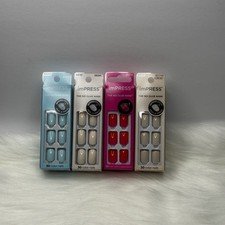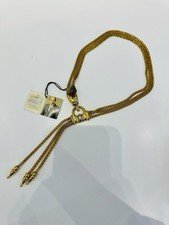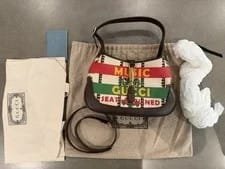Acrylic Nails Vs Press on Nails, Pros and Cons
As an amazon associate I earn from qualifying purchases.



According to recent surveys, you’re choosing between acrylic and press-on nails more than ever—with the press-on market growing 40% annually.
You’ve likely wondered which option truly suits your lifestyle. The answer isn’t straightforward.
Your decision hinges on weighing application time, durability, cost, and potential nail damage. Let’s examine what each choice demands.
Application Process and Time Commitment
When you’re deciding between acrylic and press-on nails, the application process considerably impacts your decision.
Acrylic nails demand professional application techniques requiring 45-60 minutes at a salon, involving file preparation, liquid-powder mixing, and careful sculpting.
You’ll need regular maintenance appointments every 2-3 weeks.
Acrylic nails require professional salon application taking 45-60 minutes, with maintenance appointments needed every 2-3 weeks.
Press-on nails offer superior time efficiency—you’ll achieve salon-quality results in 5-10 minutes at home.
Their application techniques are straightforward: file your natural nails, apply adhesive tabs or glue, and press firmly into place.
For those valuing convenience without sacrificing aesthetics, press-ons deliver immediate results. Acrylics suit clients prioritizing durability and professional application expertise.
Durability and Longevity
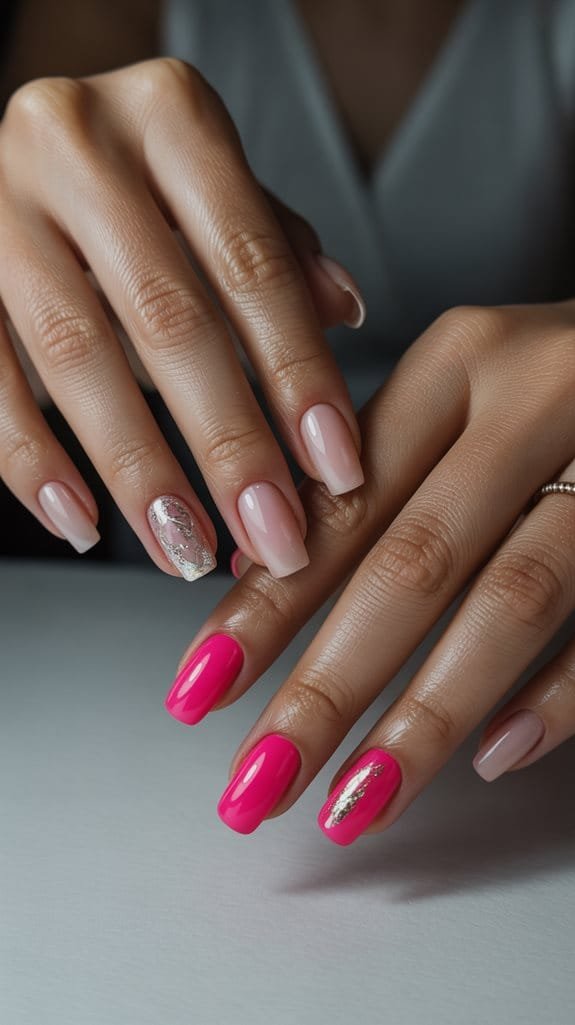
While application speed matters for immediate gratification, the lifespan of your nail enhancement determines its true value proposition.
Acrylic nails typically last three to four weeks before requiring fills, offering superior wear resistance for demanding lifestyles.
Press-on nails, conversely, provide two to three weeks of wear with greater nail flexibility.
Consider these durability factors:
- Acrylic’s polymer composition resists chipping and breaking
- Press-ons’ adhesive weakens with moisture exposure
- Acrylic requires maintenance fills for longevity
- Press-ons demand careful handling to maximize lifespan
Your choice hinges on whether you’re prioritizing extended durability or flexible, temporary nail enhancement without commitment.
Cost Comparison

Because your budget directly impacts which nail enhancement you’ll choose, understanding the financial breakdown between acrylics and press-ons proves essential.
You’ll encounter significant price variations depending on salon fees and application complexity. Press-ons offer immediate affordability, requiring minimal investment upfront.
Acrylics demand higher initial costs but potentially provide better long-term value through extended wear periods.
You’ll find salon fees fluctuate based on location, technician expertise, and design complexity. Consider maintenance expenses when calculating total costs.
Press-ons eliminate recurring salon visits, while acrylics necessitate regular fills every two to three weeks, accumulating expenses throughout the year.
| Aspect | Press-On Nails | Acrylic Nails |
|---|---|---|
| Initial Cost | $5-$15 | $25-$60 |
| Salon Fees | None | Required |
| Maintenance Cost | Minimal | $15-$30/fill |
| Lifespan | 1-2 weeks | 3-4 weeks |
| Annual Investment | $130-$390 | $520-$1,560 |
Maintenance and Care Requirements
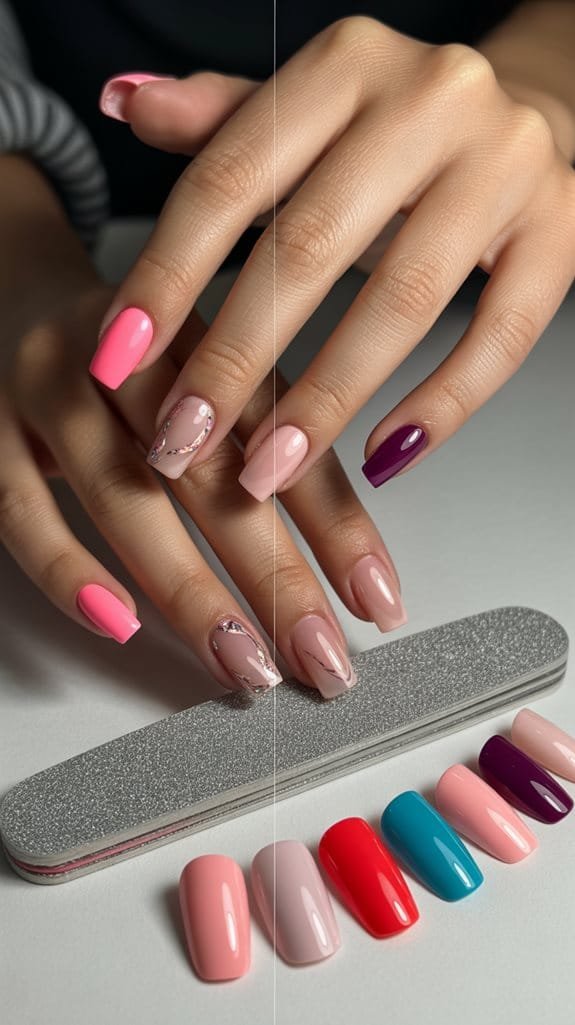
Keeping your nails in ideal condition requires different approaches depending on which enhancement you’ve chosen. Acrylic nails demand rigorous nail hygiene protocols and professional maintenance every 2-3 weeks.
Press-on nails offer flexibility with minimal upkeep between applications.
Key maintenance differences:
- Acrylics require regular fills, acetone soaks, and specialized tools
- Press-ons need gentle removal and storage in protective cases
- Both benefit from cuticle oil and moisturizing product recommendations
- Acrylic longevity depends on proper application and fill scheduling
You’ll find press-ons superior for convenience, while acrylics provide durability.
Your lifestyle determines which maintenance commitment suits you best.
Potential Damage to Natural Nails
Both acrylic and press-on nails can compromise your natural nail health, though through different mechanisms.
Acrylics require harsh chemical solvents during removal, potentially causing brittleness and thinning.
Harsh chemical solvents used in acrylic removal can leave nails brittle and thin over time.
Press-ons, while gentler, can still weaken nails through prolonged adhesive contact and repeated application cycles.
You’ll want to monitor for peeling, discoloration, and texture changes. Extended wear without breaks accelerates damage.
Prioritize nail recovery periods between applications.
If you’re committed to maintaining strong natural nails while enjoying enhancements, understanding these risks positions you as an informed member of the nail care community, enabling smarter decisions about your nail health.
Frequently Asked Questions
Can I Swim or Shower Immediately After Getting Acrylic or Press-On Nails Applied?
Can you really afford to compromise your nail longevity right away? You shouldn’t swim or shower immediately after application—water exposure weakens adhesion. You’ll want to wait 24-48 hours to guarantee your nails set properly and last.
Which Option Is Better for People With Sensitive Skin or Allergies?
You’ll find press-on nails better for allergy considerations since they don’t require chemical adhesives or UV exposure. They minimize sensitivity reactions, offering you a safer choice if you’re prone to dermatitis or allergic responses to acrylic compounds.
Do Acrylic Nails or Press-On Nails Look More Natural and Realistic?
Want nails that’ll blend seamlessly with your natural look? You’ll find press-ons deliver superior realism through advanced application techniques and customizable nail shapes that match your aesthetic perfectly, creating results that won’t compromise your insider status.
Can I Remove Press-On Nails Myself, or Do I Need Professional Help?
You’ll easily remove press-on nails yourself using proven DIY methods. Soak your nails in warm water and acetone, gently pry edges with a cuticle pusher, and apply removal techniques carefully. You’ve got this—join countless others mastering at-home removal.
Are There Any Health Risks Associated With Wearing Acrylic or Press-On Nails?
Yes, you’ll face health risks with both. Studies show 68% of frequent users experience nail damage. You’re exposed to chemicals like methyl methacrylate, compromising your nail health through prolonged wear and improper removal techniques.
As an amazon associate I earn from qualifying purchases.

